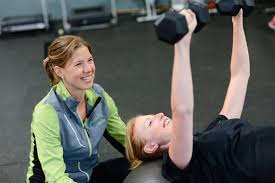Jan 10, 2018Learning From Others
No matter how long you have been coaching, there is always something new you can learn. Sometimes, the easiest way to do this is by taking a lesson from the mistakes of others. In a blog for Train Heroic, Dave Reynolds, Head Strength Coach at The Baylor School in Chattanooga, Tennessee, offers coaches a few tips that he has learned throughout the years.
First, Reynolds says that whenever talking to an athlete, whether it’s about their workout plan or their progress in the program, always be straightforward and don’t sugarcoat your words. Athletes can generally tell when you are not being completely candid. Make sure you use terms that they understand, and be honest. Otherwise, you will have wasted both their time and your own.
Another mistake that coaches often make is trying to incorporate new athletes into their program too quickly. Reynolds explains that many of the new athletes that join a program are coming in with little or no knowledge of lifting. And although it can take time, they need to be given the right instruction so that they do not become discouraged and intimidated when they can’t keep up with their teammates or don’t understand new direction.
“To combat that issue, my staff and I have developed what we call our ‘Raider Ways’ introduction to weightlifting and conditioning,” writes Reynolds. “Many programs call it ‘Block Zero.’ Whatever you wish to call it is fine. What we are looking for is content that builds a solid foundation for a kid new to lifting.”
Whether you are working with new players or seasoned seniors, Reynolds has also learned the importance of not going overboard in a session. Chances are that if you keep your athletes too long they will become distracted or even overworked. Instead, create a structured plan where your athletes are finishing all they need to, while not losing their focus and intensity.
“My mistake when I took my first strength coaching job was my lifts were too long and the attention to the details was not where I wanted it to be,” writes Reynolds. “The focus was not there, and they were not getting the strength gains and better speed I desired.”
Here are two examples of lifting programs from Reynolds:
Lift #1:
- Power Snatch + Snatch – 4 x 2 + 2 x 60% (Snatch = 70% of Clean)
- Jerk (set up safety bars) – 2 x 3 x 60%, 2 x 3 x 65% (Jerk = 85% of Clean)
- Clean Pull 4 x 5 x 85%
- Back Squat + Partner Hams – 8 x 60%, 6 x 65%, 6 x 3 x 70% + 5
- Abs – 3 x 15 (HLR) + 30 sec. Plank
- Neck – 1 x 10 x 4 Way Manual
- Stretch – 2 x 10 Toe Touches
Lift #2:
- Power Clean + Clean – 2 x 2 + 2 x 60%, 2 x 2 + 2 x 65%
- Front Squat + RDL – 8 x 60%, 6 x 65%, 6 x 3 x 70% + 5 x 60% (FS = 85% of Squat, RDL = Squat)
- Push Press + Pull Ups – 4 x 5 x 70% + 10
- Close Grip DB Incline Bench + SA DB Row – 4 x 10 + 10 ea. Arm
- Neck – 1 x 10 x 4 Way Manual
- Abs – 3 x 30 sec. Plank + 15 sec. Right/Left Plank
- Stretch – 2 x 10 toe Touches
The last lesson that Reynolds discusses is continuing to motivate your athletes, even when it seems impossible. These athletes are in class all day and probably have plans for after practice, so motivating them to work their hardest can be difficult at times. According to Reynolds, this entails going further than talking with them solely about their work in the weight room. Instead, the trick is to find what inspires each athlete, and figure out a way to weave it into your program.
“Some kids like quotes,” writes Reynolds. “Others like t-shirts. Others just need a pat on the back. I often put quotes on the bulletin board in the locker room that are meant to motivate and sometimes that happens. Sometimes I get a laugh out of it, and sometimes nothing.”



